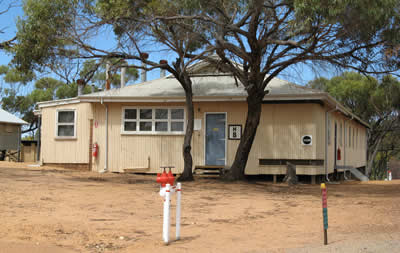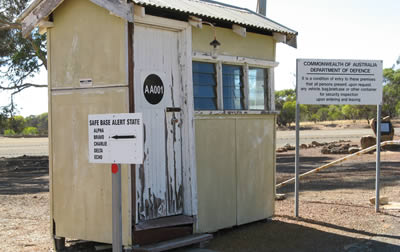Resources / Camp Timeline
Pre-European Settlement
This area was part of the lands of the Ballardong people. The Burlong Pool and the Avon River are part of Dreaming stories for the Ballardong.
1829 – 1830
Following the establishment of the Swan River colony, the first land grants were taken up in the Northam district.
1871
The Northam Road Board was gazetted.
1879
Northam became a municipality. With this, the Council was granted 2,100 acres west of Mount Ommanney for use as a ‘commonage’ and to provide an income to the new municipality. The land had previously been part of pastoral leases belonging to Thomas Lockyer and James Wilkerson
1886
Although the town was declared in c. 1833, development was slow until the arrival of the Eastern Railway in 1886.
1896
In this year, a Mounted Rifle Troops was formed. Following Federation, such volunteer militia units became part of the Australian Military Forces in 1903.
1903
CY O’Connor’s Golden Pipeline completed.
1910
National Training was introduced for young boys. Later, the Northam Army Camp was one of the sites where the cadet training took place.
1914
With the outbreak of World War One, the Australian Imperial Force was raised and eventually a mounted unit was formed out of Western Australia.
This was the legendary 10th Light Horse Regiment, which trained in the Northam area. A large number of Northam men join the 10th Light Horse, including local Captain Hugo Throssell, who was the only light horseman to be awarded the Victoria Cross during World War One.
1935
The Department of the Army decided to establish a permanent camp at Northam because of its strategic position near major transport routes and access to the Golden Pipeline. Part of the town common was leased from the Northam Municipal Council for this purpose.
Read Colonel Weick’s account of the establishment of Northam Army Camp
1935 – 1939
The camp was planned, cleared and some permanent buildings erected.
1939
World War Two began and with it an intense building program was started at the Northam Army Camp with 175 huts erected in one month.
1939 – 1945
Northam Army Camp was the brigade training camp for the Second Australian Imperial Force, which left for Britain on 10 January 1940, and played an important role in the British offensive in the Middle East and North Africa in 1940/1941.
The Camp also served as the training ground for the Citizens Military Forces, comprised of local male volunteers.
1946
The camp housed 3500 Italian Prisoners of War (POWs).
1949 – 1951
Northam Army Camp began to operate as the Department of Immigration Accommodation Centre. Initially a centre for Displaced Persons from eastern Europe and then a Migrant Reception Centre for other post-war non-British immigrants, it is estimated that approximately 15,000 men, women and children passed through the Northam camp.
1950 – 1953
Northam Army Camp reverted back to the Department of the Army and was again used by Western Command to train personnel, this time for the Korean War.
1950s – 1960s
From this period Northam Army Camp fell into decline and a large number of buildings were removed from the site. Some were donated to local farmers following the 1968 Meckering earthquake or demolished due to termite damage.
1990s
The continued sale and removal of buildings from the camp as well as the Defence Department’s plans to dispose of the site was a matter of much public concern.
Although this did not eventuate due to national security concerns, the significance of the site to the Western Australian and broader community was recognised by its inclusion in the State Register of Heritage Places in 1999/2000.
View an aerial photograph of Northam Army Camp as it was in 1985.
2004
A consultant’s report estimated that ‘only about 52 of some 400 pre 1951 buildings remain’.
2010
On 18 October, the Australian Government announced the establishment of an immigration detention centre at the site.
Present Day
Northam Army Camp is still used for military training.
Further Reading
- Northam Army Camp, Heritage Council of Western Australia
- Northam Army Camp, Australian Heritage Database
- Environmental Resources Management, ‘Northam Army Camp Heritage Management Plan’ prepared for the Department of Defence, 2006
- Stories from the Northam Army Camp, NACHA, Judy Durey/Murdoch University, 2007
- National Archives of Australia
- Donald S. Garden, Northam: An Avon Valley History, Northam Shire Council & Hesperian Press, Perth, 1992



